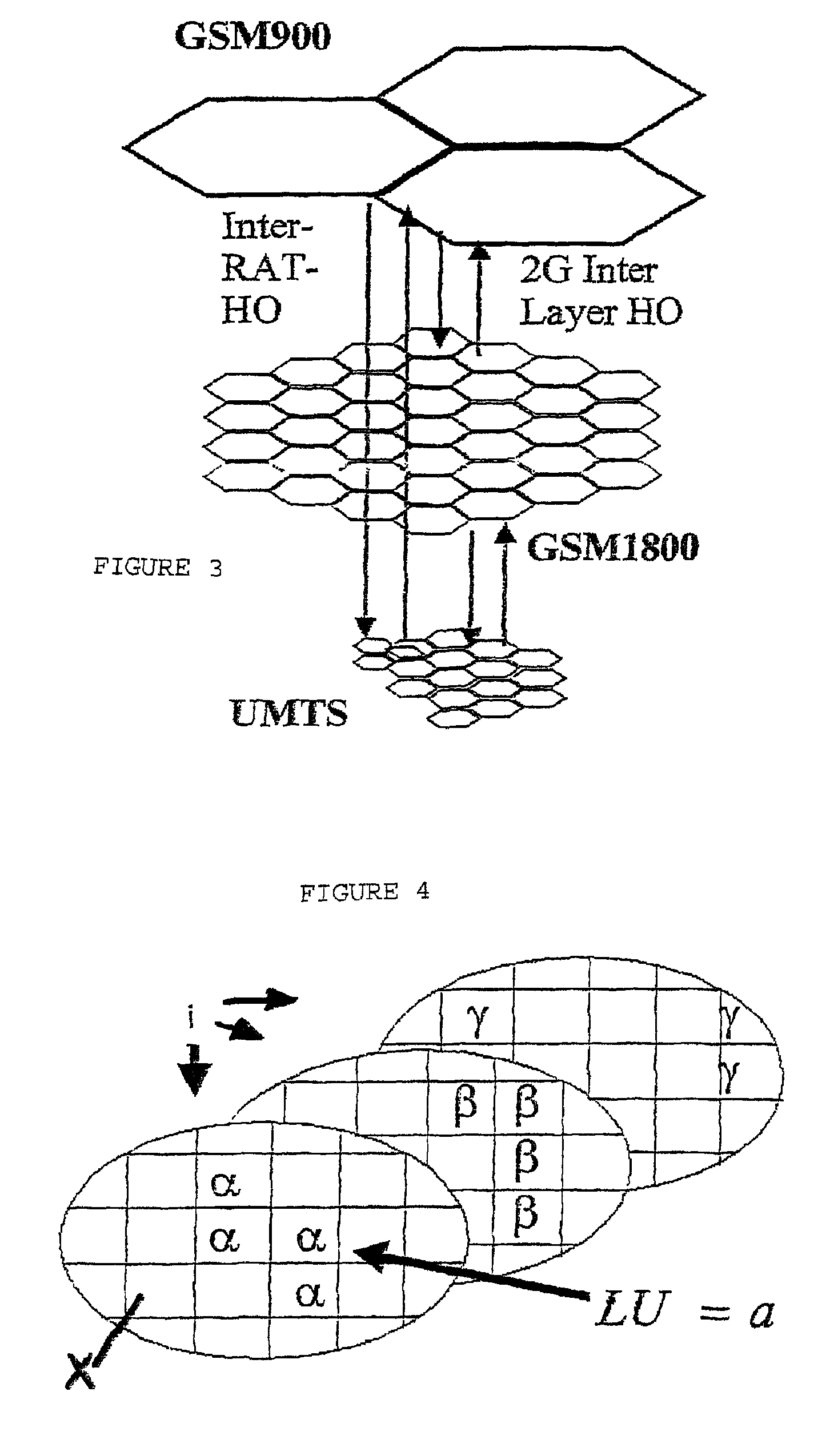Generation of a space-related traffic database in a radio network
a radio network and traffic database technology, applied in the direction of network planning, wireless commuication services, instruments, etc., can solve the problems of oversimplification of the best-server model, no longer fully covered by the radio network, etc., and achieve fast numeric calculation, realistic image, and calculation very quickly
- Summary
- Abstract
- Description
- Claims
- Application Information
AI Technical Summary
Benefits of technology
Problems solved by technology
Method used
Image
Examples
Embodiment Construction
[0082]There are various types of multi-layer radio networks that can be used for generating a traffic database according to the inventive method. These may be, for example, as shown in FIG. 1, 2G multi-layer radio networks, for example GSM900 and GSM1800 radio networks.
[0083]In order to be able to use only one 2G traffic database for a GSM900 radio network with a GSM1800 radio network overlaying the same, a multi-layer radio cell model must be used. The advantage of using only one traffic database for the layered GSM radio networks is based in that, in areas where new base stations of the GSM1800 radio network will be built, these can directly take over the traffic from the GSM900 radio network. The traffic is thus dynamically divided between the layers in dependence upon the given radio network. The division of the traffic between the layers is addressed at each area element by means of the assignment probabilities of the multi-layer radio cell model. This can be done in such a way...
PUM
 Login to View More
Login to View More Abstract
Description
Claims
Application Information
 Login to View More
Login to View More - R&D
- Intellectual Property
- Life Sciences
- Materials
- Tech Scout
- Unparalleled Data Quality
- Higher Quality Content
- 60% Fewer Hallucinations
Browse by: Latest US Patents, China's latest patents, Technical Efficacy Thesaurus, Application Domain, Technology Topic, Popular Technical Reports.
© 2025 PatSnap. All rights reserved.Legal|Privacy policy|Modern Slavery Act Transparency Statement|Sitemap|About US| Contact US: help@patsnap.com



